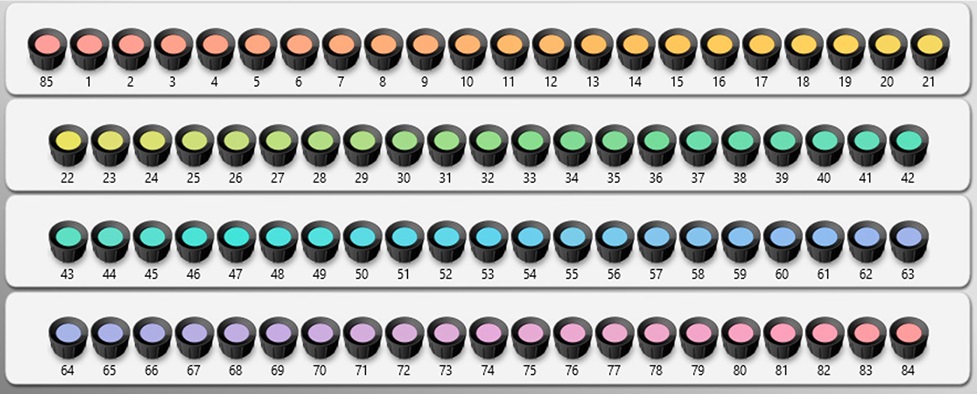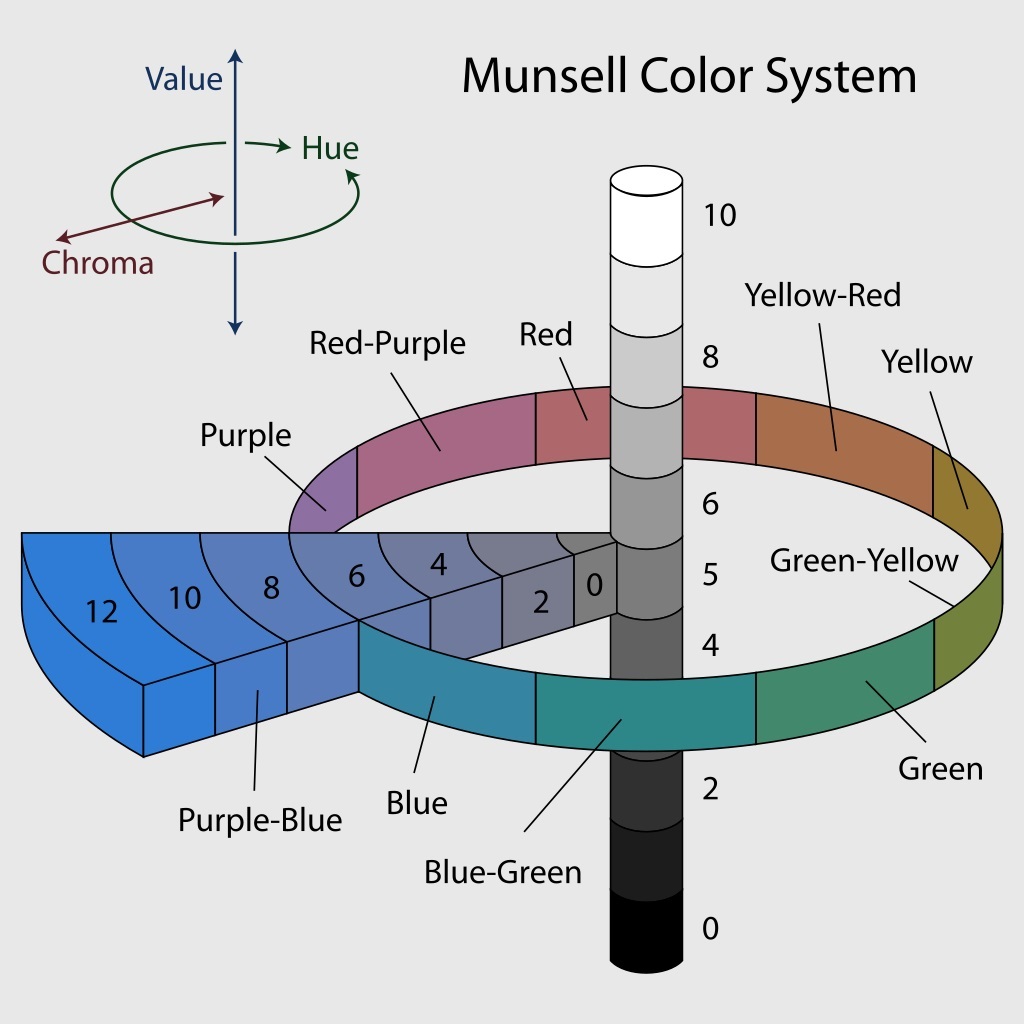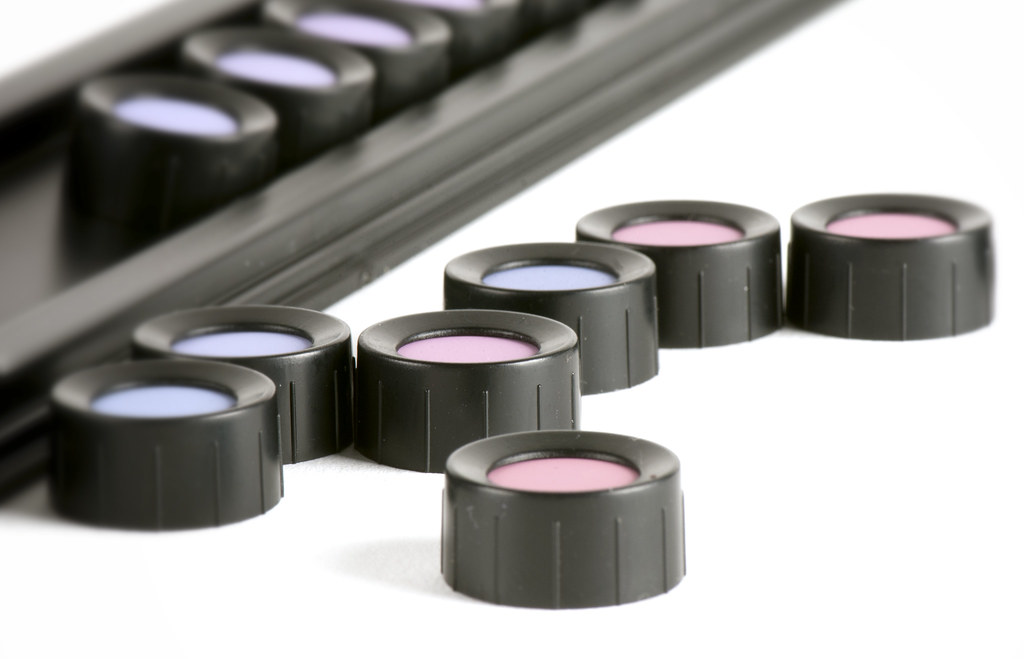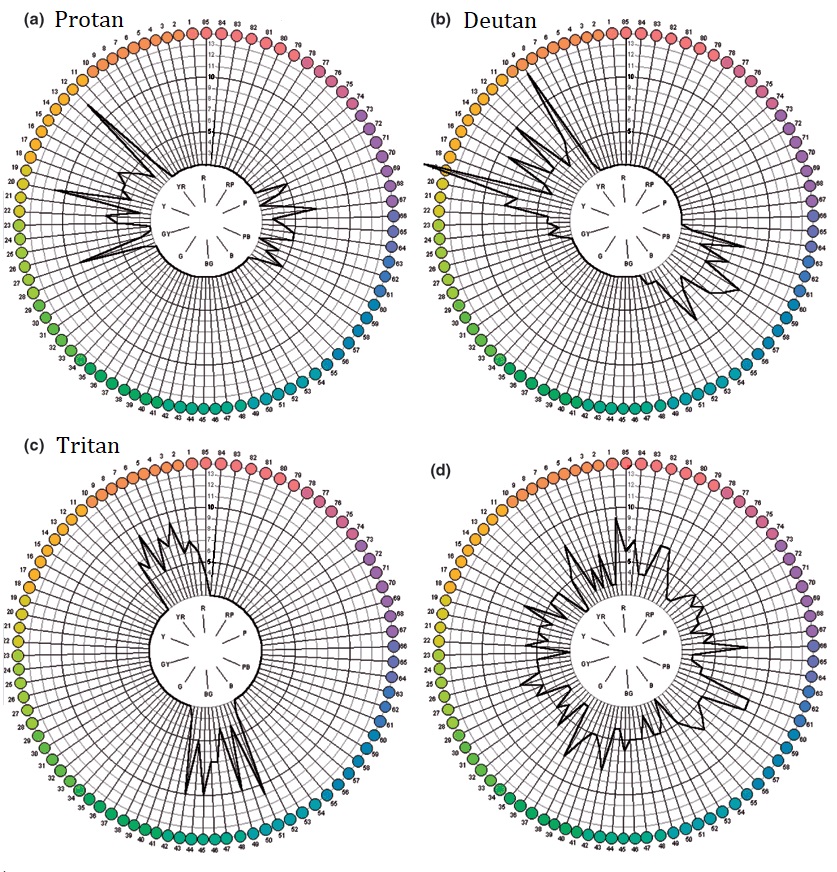Farnsworth Munsell 100 Hue Test
Contents
About Farnsworth Munsell 100 Hue Test

The Farnsworth–Munsell 100 Hue Color Vision test is a test of the human visual system often used to test for color blindness. The system was developed by Dean Farnsworth in the 1940s and it tests the ability to isolate and arrange minute differences in various color targets with constant value and chroma that cover all the visual hues described by the Munsell color system.

Munsell color system

Munsell color system sample cards
There are several variations of the test, one featuring 100 color hues and one featuring 15 color hues.
The most common form of the Farnsworth–Munsell 100 Hue Color Vision Test contains four distinct rows of similar color hues, each containing 25 distinct variations of each hue. Each color hue at the polar end of a row is fixed in position, to serve as an anchor. Each hue tile between the anchors can be adjusted as the observer sees fit. The final arrangement of the hue tiles represents the aptitude of the visual system in discerning differences in color hue. Failures within the observers visual system can be measured as a function of two factors contained within the test; either the amount of instances that a tile is misplaced, or the severity of a tile displacement (i.e., the distance between where a tile should have been placed and where it was actually placed.)

The tiles are arranged in four rows based on color hue. The rows cover orange/magenta hues, yellow/green hues, blue/purple and purple/magenta hues, in that order. The physical derivative of the test is given on a black background to isolate and accentuate color hues, which are round and roughly an inch in diameter.

Evaluation of the test - About the Scores
The Farnsworth Munsell Hue Color Test will indicate if you have a color vision defect and identifies where your confusion lies.
What the Scores Mean
Superior (Good) Score: About 16% of the population make 0 to 4 transpositions on the first test, or total error scores of zero to 16. This is a superior range of competence for color discrimination.
Average (Normal) Score: About 68% of the population score between 16 and 100 on first tests. This is a normal range of competence for color discrimination.
Low (Weak) Score: About 16% of the population make total error scores of more than 100. The first retest may show improvement, but further retests do not significantly affect the score.

Online Farnsworth Munsell 100 Hue Test color blind test
This is the online version of the Farnsworth Munsell 100 Hue test, limited to 40 colors. On mobile, the test is not optimal, please use on PC or tablet for testing.
Evaluation of the test
The diagram shows the regions of the color spectrum where color discrimination is low. The lower the score, the better the result. 0 points is the perfect score. Error points from 1 to 4 are almost normal results, with 1-2 small errors. If your error score is more than 4, than you may have color vision deficiency.

